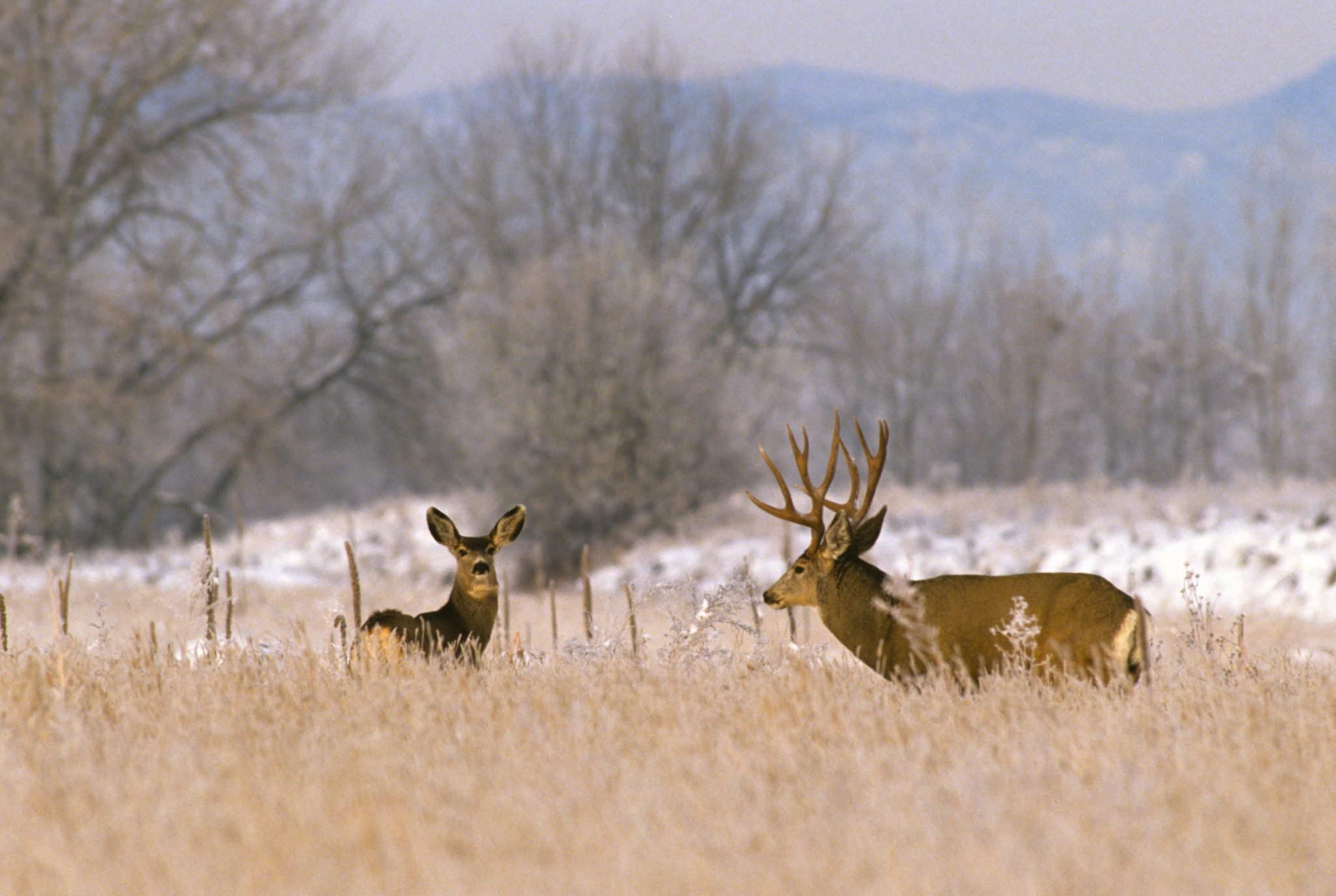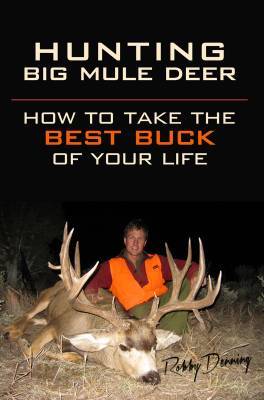
In this series, I’ve covered the strategies of hunting for big mule deer during different times of the season. You need to apply for hunts where and when you personally can be the most effective. The fourth phase of the fall hunts, and possibly the best, is the peak November rut. This runs approximately November 10th-30th in much of the West.
Most hunters agree this is prime time to kill a really big buck. This fact is reflected in draw odds–pulling a tag (especially rifle) is very tough to near impossible in good units. There are a few OTC archery hunts in various states at this time, but I gave up on those years ago– too many does to get by to kill a big buck with any consistency. For those hunts to work, you need fresh snow every day or no snow and above freezing temps.
There are some muzzleloader opportunities in various states at this time. If you know what you’re doing, you can take advantage of better draw odds and still be able to effectively hunt big mule deer (see my series on building a muzzleloader for big deer here).
Even with the tough draw odds, I apply for hunts during the peak November rut almost every year, but rarely draw (except this hunt where I took a high 180’s buck on November 27th):
It’s during these last three weeks of November that the oldest bucks are more likely to show themselves and make mistakes. If you find yourself hunting at this time, here are my tips:
Hunt the Does
By about the 11th, you can expect to just be hunting rutting bucks, which by default means you’ll be hunting does. Almost always the big bucks will be with or very near to the secure does (read this post if you don’t know what I mean by secure does).
Don’t listen to the fool buzzing around on his 4-wheeler who says the rut hasn’t started because he saw a four-point feeding alone. That buck probably got his tail whipped the night before by horny head and knows he better lay low until a safer opportunity arises.
Plan your day to thoroughly cover as much country that holds does as possible. As my friend, Jason Carter, says:
“It’s about the numbers–look at as many bucks as possible if you want a giant.”
He’s right. Even in areas with a good age class of bucks, it can take some time to find something special. You need to know all the country that can hold deer and how to access it. If the migration is on, you’ll probably have to cover even more ground than if most of the deer are already on the winter range–every unit is different.
Hunt and Glass Right
Just remember with this tactic of covering a lot of country, you still have to hunt and glass carefully and thoroughly. Older bucks are hard to see and have an affinity for thick cover, so don’t move on too fast.
Tracking is Important
Your tracking skills come in handy during the peak rut as there is more likely snow on the ground and you can find areas big deer are rutting in by the tracks, (here’s a blog post identifying tracks made by older deer: Tracking).
Know What Big Deer Look Like
I’ve learned over the last 20 years of lab-aging bucks for myself and other hunters (goHunt article on that topic here), not every older buck has big antlers. You have to know how to judge big deer (and be disciplined enough to pass lesser bucks). Overestimating a buck on a hard-to-draw rut tag will send you home bitter. I study every picture and video and mount I can get my eyes on, and I look at a lot of bucks on the hoof in and out of season. You should, too.
Should I Prescout?
One question I get asked is “If I’m hunting a rut/migration tag, should I even scout?”
While scouting for individual bucks is often fruitless, I still say scout if you can. There is a certain confidence that is possessed by hunters who know their units. They hunt harder, more effectively, and know more about where to be and when to be there. Remember that if you have a tag during the peak rut, there is a good chance you’ll never have that tag again (if it’s worth the paper it’s printed on), so why not invest as much as possible into it?
If you just can’t make it to your unit preseason, be sure an show up days early (five is best) as any bucks you find will likely be in the same square mile come opening day, unless the migration is heavy. One warning, though: even if you have enough vacation to spend a week preseason on your unit, you may not have the mental energy. Most hunters don’t realize this until it happens, and are surprised that they’re ready to go home about day two of the season. This is yet another reason that I try to scout early–even weeks or months before the opener–then I can show up to the unit fresher come opening day.
Just remember, if you have a peak November rut tag, it’s not likely you’ll have it again any time soon, so give it all you got–you won’t regret it.
When planning your hunts, check out goHunt.com. They specialize in good hunting information for the DIY hunter: ![]()
Be sure and keep up the Rok Blog by subscribing. If you’re on a PC, subscribe at upper right “Keep Up With Rokslide”. If you’re mobile, scroll to the bottom to find the same form.
Read more mule deer tactics in my book, Hunting Big Mule Deer. Signed copies are available in the Rokslide store, or you can go Amazon for faster delivery.

















